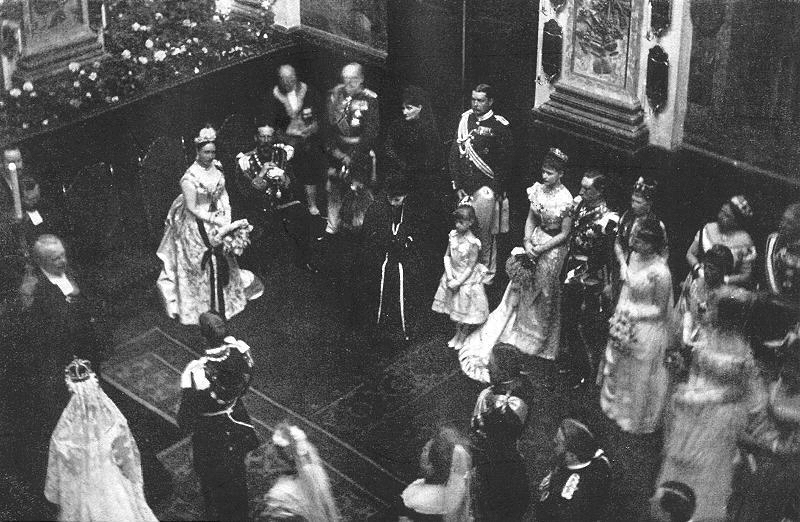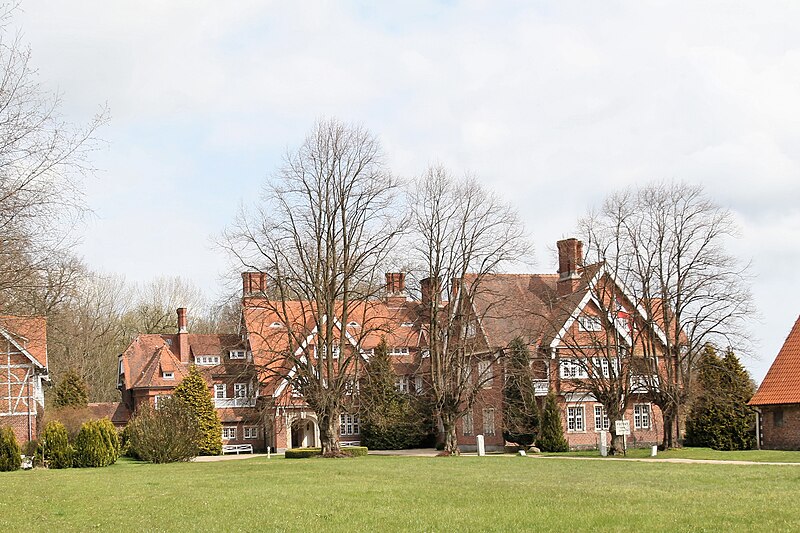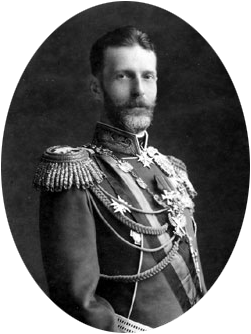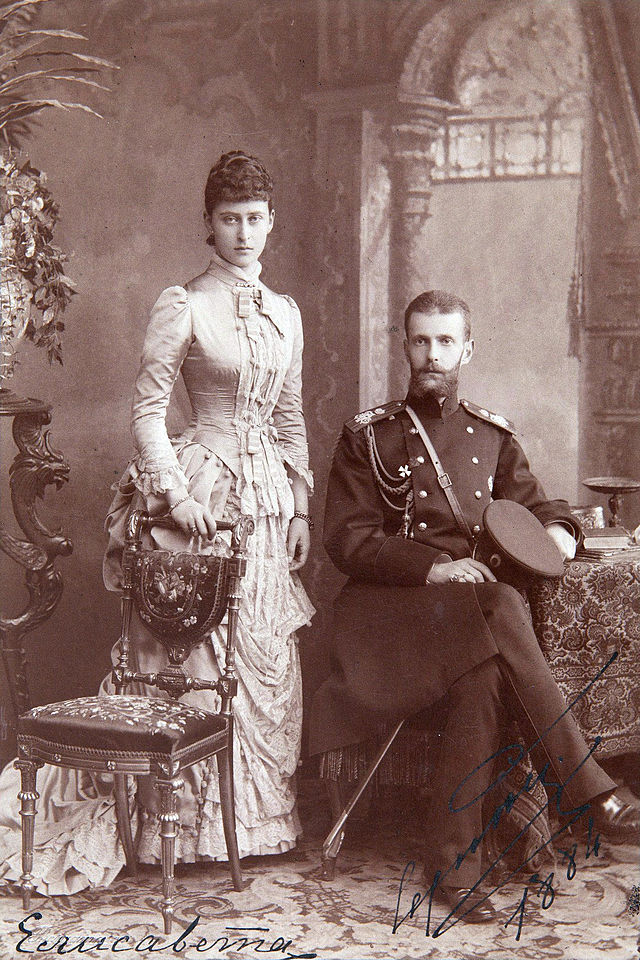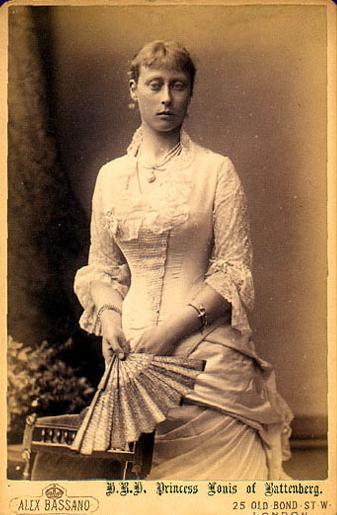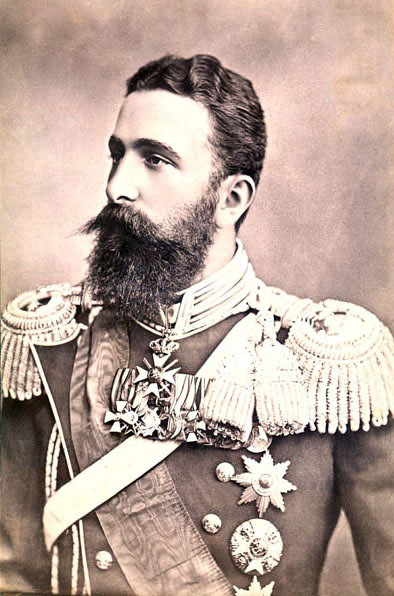by Scott Mehl © Unofficial Royalty 2015
Grand Duchy of Hesse and by Rhine: The House of Hesse-Darmstadt was one of several branches of the House of Hesse. After the fall of the Holy Roman Empire in 1806, the Landgraviate of Hesse-Darmstadt was raised to the Grand Duchy of Hesse, and Ludwig X, Landgrave of Hesse-Darmstadt became the first Grand Duke, Ludwig I. Several years later, at the Congress of Vienna, Ludwig was forced to cede his Westphalian territories but in return was given the Rheinhessen region and the Grand Duchy of Hesse became the Grand Duchy of Hesse and by Rhine. Ernst Ludwig, a grandson of Queen Victoria, was the last Grand Duke of Hesse and by Rhine. With the fall of the German states, Ernst Ludwig refused to abdicate but still lost his throne on November 9, 1918. Today the territory that encompassed the Grand Duchy of Hesse and by Rhine is in the German state of Hesse.
********************

photo: Wikipedia
Ernst Ludwig, Grand Duke of Hesse and by Rhine
Ernst Ludwig, Grand Duke of Hesse and by Rhine was the fourth child of Princess Alice of the United Kingdom and Grand Duke Ludwig IV of Hesse and by Rhine. He was born Ernst Ludwig Karl Albrecht Wilhelm (known as Ernie), on November 25, 1868 in Darmstadt, Grand Duchy of Hesse and by Rhine, now in Hesse, Germany. He had six siblings:
- Victoria of Hesse and by Rhine, Marchioness of Milford Haven (1863-1950), married Prince Louis of Battenberg, had two daughters and two sons
- Elisabeth of Hesse and by Rhine, Grand Duchess Elizabeth Feodorovna of Russia (1864-1919), married Grand Duke Sergei Alexandrovich of Russia, no children
- Irene of Hesse and by Rhine, Princess of Prussia (1866-1953), married her first cousin Prince Heinrich of Prussia, had three sons
- Prince Friedrich of Hesse and by Rhine (1870-1873), hemophiliac, died after a fall
- Alix of Hesse and by Rhine, Empress Alexandra Feodorovna of Russia (1872-1918), married Nicholas II, Emperor of All Russia, had four daughters and one son
- Princess Marie of Hesse and by Rhine (1874-1878), died from diphtheria
In 1874, his younger brother Frittie died after falling from a window while the two were playing. A hemophiliac, Frittie succumbed to a brain hemorrhage. Ernie was distraught and developed what would become a lifelong fear of death, particularly of dying alone. This fear would soon be reinforced by the deaths of his mother and youngest sister. In late 1878, most of the family fell ill with diphtheria. Sadly, Ernie’s youngest sister, Princess May, did not recover and died in November. While consoling Ernie, Alice gave him a hug and kiss, thus exposing herself to the illness. Due to her weakened state, she quickly fell ill herself and died on December 14, 1878.
After Alice’s death, Queen Victoria stepped in as a surrogate mother to the Hessian children, often having them stay with her in her various residences in the United Kingdom. Ernie’s three elder sisters also helped to contribute to his upbringing, and he remained particularly close to both Victoria and Ella.
Ernie was educated privately, and then in 1885 began serving with the First Hessian Infantry Regiment as a sub-lieutenant. He became a first lieutenant in 1889 and then attended the University of Leipzig and the University of Giessen. In 1891, following his father’s example, he was attached to the First Prussian Regiment of Foot Guards at Potsdam. Then, on March 13, 1892, Ernie became the reigning Grand Duke of Hesse and by Rhine upon his father’s death.
On April 9, 1894, in Coburg, Duchy of Saxe-Coburg and Gotha, now in the German state of Bavaria, Ernie married his first cousin, Princess Victoria Melita of Saxe-Coburg and Gotha. She was the daughter of Prince Alfred, Duke of Edinburgh and Duke of Saxe-Coburg and Gotha, and Grand Duchess Maria Alexandrovna of Russia. The wedding was attended by Queen Victoria and many of her extended family. It was at this gathering that Ernie’s younger sister, Alix, became engaged to the future Nicholas II, Emperor of All Russia. While that marriage turned out to be a happy one, the same could not be said for Ernie and Victoria Melita. Having been pushed into marriage by Queen Victoria, the couple shared little in common and quickly grew to resent each other. Despite this, they had two children:
- Elisabeth of Hesse and by Rhine (1895-1903) – died of typhoid, at age 6
- stillborn son (1900)

Queen Victoria, surrounded by her extended family, gathered for Ernie’s wedding, 1894; Credit – Royal Collection Trust / © Her Majesty Queen Elizabeth II 2022
Disenchanted with each other, Ernie and Victoria Melita wished to divorce, but their grandmother would not allow it. However, following Queen Victoria’s death, they quickly separated and were divorced on December 21, 1901. They shared custody of their daughter, to whom Ernie was particularly close. Victoria Melita went on to marry another first cousin, Grand Duke Kirill Vladimirovich of Russia.

The Hesse siblings, October 1903. L-R: Ernie, Alix (with Nicholas), Irene (with Heinrich), Ella (with Serge), Victoria (with Louis). photo: Wikipedia
Following a large family gathering in Darmstadt in October 1903 for the wedding of his niece, Princess Alice of Battenberg, Ernie and his daughter went to visit the Russian Imperial Family at their hunting lodge in Poland. While there, Elisabeth fell ill. At first, it was just believed to be exhaustion from so much playing with her cousins, but her condition quickly worsened. A telegram was sent to her mother, imploring her to come quickly, as it seemed the child would not survive. Unfortunately, the telegram would arrive too late. Princess Elisabeth died on November 16, 1903. Rumors at the time were that she had been poisoned by eating or drinking something which was intended for her uncle Nicholas II. However, it was discovered that she had died from typhoid. Ernie, of course, was distraught. His daughter had been, in his own words, “the sunshine of my life.”
On February 2, 1905, Ernie married Princess Eleonore of Solms-Hohensolms-Lich, in Darmstadt. Eleonore was the daughter of Hermann, The Prince of Solms-Hohensolms-Lich and Countess Agnes of Stolberg-Wernigerode. This marriage, from all accounts, was a very happy one. The couple had two sons:
- Georg Donatus, Hereditary Grand Duke of Hesse and by Rhine (1906-1937) – married Princess Cecilie of Greece, had issue
- Ludwig of Hesse and by Rhine (1908-1968) – married The Hon. Margaret Geddes, no issue

Ernie, Eleonore, and their two sons; Credit – Wikipedia
Ernie was well-loved in Hesse and involved himself with maintaining and supporting the arts, particularly music. Sadly, the later years of his life were marred by tragedy. World War I brought the murders of two sisters, Alix and Ella, in Russia, as well as the loss of the Grand Ducal throne. With the fall of the German states, Ernie refused to abdicate but still lost his throne on November 9, 1918. However, unlike many of his counterparts, he was allowed to remain in Hesse and retained several of the family’s properties, including Schloss Wolfsgarten and the New Palace in Darmstadt.
Grand Duke Ernst Ludwig of Hesse and by Rhine died at Wolfsgarten on October 9, 1937. Tragically, just weeks later, a plane crash in Belgium took the lives of many of his remaining family – his widow, elder son, daughter-in-law, and two grandsons. The plane crash took place on November 16, 1937 – ironically, this was the anniversary of the deaths of both Ernie’s sister May (in 1878) and his daughter Elisabeth (in 1903). Ernie is buried in Rosenhöhe Park in Darmstadt, Germany alongside his wife and family.
This article is the intellectual property of Unofficial Royalty and is NOT TO BE COPIED, EDITED, OR POSTED IN ANY FORM ON ANOTHER WEBSITE under any circumstances. It is permissible to use a link that directs to Unofficial Royalty.
Hesse and by Rhine Resources at Unofficial Royalty




